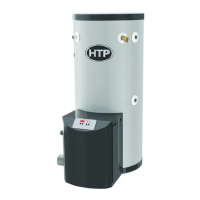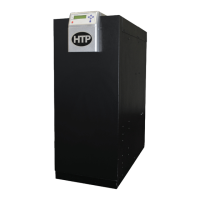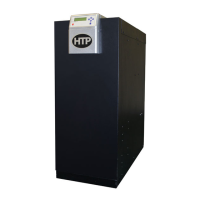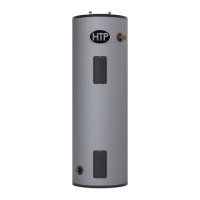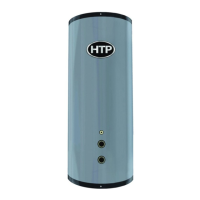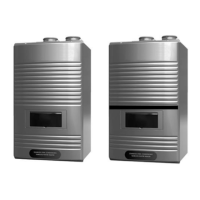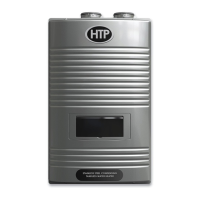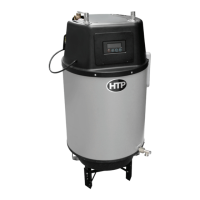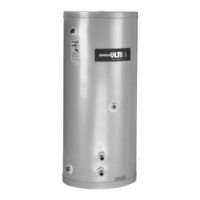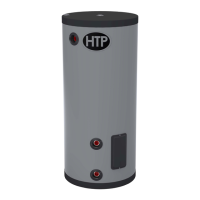LP-179 Rev. 6.7.16
10
Figure 2 - CO Warning Label
H. Water Chemistry Requirements
Chemical imbalance of the water supply may aect
eciency and cause severe damage to the water heater
and associated equipment. HTP recommends having water
quality professionally analyzed to determine whether it is
necessary to install a water softener. It is important that the
water chemistry on both the domestic hot water and central
heating sides are checked before installing the water heater,
as water quality will aect the reliability of the system. In
addition, operating temperatures above 135
o
F will further
accelerate the build-up of lime scale and may shorten the
service life of the water heater. Failure of a water heater due
to lime scale build-up, low pH, or other chemical imbalance IS
NOT covered by the warranty.
Outlined below are water quality parameters that need to be
met in order for the system to operate eciently for many
years.
Water Hardness
Water hardness is mainly due to the presence of calcium and
magnesium salts dissolved in water. The concentration of
these salts is expressed in mg/L, ppm, or grains per gallon
as a measure of relative water hardness. Grains per gallon is
the common reference used in the US water heater industry.
Hardness expressed as mg/L or ppm may be divided by 17.1
to convert to grains per gallon. Water may be classied as
very soft, slightly hard, moderately hard, or hard based on
its hardness number. The minerals in the water precipitate
out as the water is heated and cause accelerated lime scale
accumulation on a heat transfer surface. This lime scale
build-up may result in premature failure of the water heater.
Operating temperatures above 135
o
F will further accelerate
the build-up of lime scale and may shorten the service life of
the water heater.
Water that is classied as hard and very hard must be softened
to avoid water heater failure.
CLASSIFICATION MG/L OR PPM GRAINS/GAL
Soft 0 - 17.1 0 - 1
Slightly Hard 17.1 - 60 1 - 3.5
Moderately Hard 60 - 120 3.5 - 7
Hard 120 - 180 7 - 10.5
Very Hard 180 and over 10.5 and over
If the hardness of the water exceeds the maximum level of 7
grains per gallon, the water should be softened to a hardness
level no lower than 5 grains per gallon. Water softened as low
as 0 to 1 grain per gallon may be under-saturated with respect
to calcium carbonate, resulting in water that is aggressive and
corrosive.
pH of Water
pH is a measure of relative acidity, neutrality, or alkalinity.
Dissolved minerals and gases aect water pH. The pH scale
ranges from 0 to 14. Water with a pH of 7 is considered neutral.
Water with pH lower than 7 is considered acidic. Water with a
pH higher than 7 is considered alkaline. A neutral pH (around
7) is desirable for most potable water applications. Corrosion
damage and tank failures resulting from water pH levels
When removing an existing heater, follow the steps below.
1. Seal any unused openings in the common venting system.
2. Visually inspect the venting system for proper size and
horizontal pitch to determine if there is blockage, leakage,
corrosion, or other deciencies that could cause an unsafe
condition.
3. If practical, close all building doors, windows, and doors
between the space in which the water heater remains connected
to the common venting system and other spaces in the building.
Turn on clothes dryers and any appliances not connected to
the common venting system. Turn on any exhaust fans, such as
range hoods and bathroom exhausts, at maximum speed. Do
not operate a summer exhaust fan. Close all replace dampers.
4. Place in operation the appliance being inspected. Follow the
lighting instructions. Adjust the thermostat so the appliance will
operate continuously.
5. Test for spillage at the draft hood relief opening after 5
minutes of main burner operation. Use the ame of a match or
candle or smoke from a cigarette.
6. After it has been determined that each appliance remaining
connected to the common venting system properly vents
when tested as outlined, return doors, windows, exhaust fans,
replace dampers, and any other gas burning appliances to their
previous condition of use.
7. Any improper operation of the common venting system
should be corrected to conform to the National Fuel Gas Code,
ANSI Z223.1. When resizing any portion of the common venting
system, the system should approach the minimum size as
determined using the appropriate tables in Appendix G of ANSI
Z223.1.
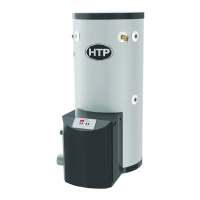
